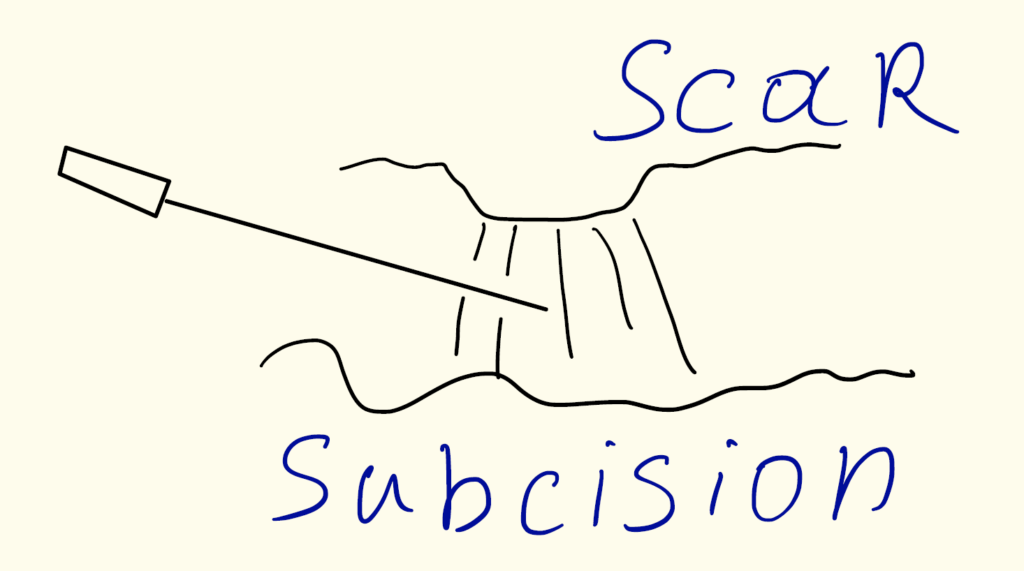Acne Scarring Removal: Non-Energy Based Techniques
Treatment options for acne scarring are split into two categories: non-energy based and energy based. Non-energy based options include
Subcision is a minimally invasive surgical technique that includes dissecting and release of the scarring tissue that pulls the skin down creating atrophic scar (“indented scar”). As a result, the indentation is less prominent. The procedure is done under local anaesthesia and is not painful.

Very deep scars can be exciced can be excised and closed with stitches. It is not the first choice procedure and reserved for scars that cannot be corrected with other options.
Dermabrasion (DA) and microdermabrasion (MDA) are two techniques that resurface the skin on face by mechanically inducing the damage of the skin to stimulate re-epithelization (regrowth). DA involves the complete removal of epidermis and reaches all the way up to papillary and/or reticular dermis layer. It is able to remodel skin’s structural proteins. The whole procedure is performed under local or general anesthesia. The procedure is done with a motorized hand piece that rotates a diamond fraise or wire brush. From those motions, pinpoint bleeding may occur on raw wounded area(s). Appropriate wound care would be advised and instructed by the dermatologist.
MDA differs from DA. It is considered as more superficial treatment since it only removes the stratum corneum layer. It induces the natural process of exfoliation. Different devices can be used to perform this procedure. In comparison with DA, MDA can be repeated after shorter time intervals, does not require anesthesia, not a painful process, and has fewer post-procedure complications. However, it is a less effective method than DA and; thus, requires multiple repeats to achieve best results.
Skin micro-needling is depicted as a process of puncturing the skin in vertical and then horizontal patterns by a special device. It has a lower risk of developing post-inflammatory hyperpigmentation. It can be performed on all skin types. Due to pain associated with the procedure, topical anaesthetic creams are often advised to be used. Not to mention, micro-needling is also effective for the treatment of other skin conditions, such as burn scars, wrinkles, and pigmentary disorders.
Centre for Medical and Surgical Dermatology offers collagen induction or microneedling therapy as one of the treatment options to reduce acne scarring. For more information about this procedure, visit the following link:
Chemical treatment is the process involving the application of chemical (e.g Trichloracetic Acid) on the skin in order to stimulate the destruction of the outer damaged layer. In other words, it is a way to accelerate the natural exfoliation process leading to remodeling of skin tissue as well as reducing the acne scarring visibility. Chemical treatment is based on 4 levels of depth: very superficial, superficial, medium level, and deep. The deep peeling needs sedation and usually done in hospital settings. The superficial to medium treatments
Centre for Medical and Surgical Dermatology offers various acne scarring removal procedures that are individual for each patient. For more information on the acne condition, visit the following link:
2 Comments
Comments are closed.
Related Posts




Acne is a very common issue and affects almost everyone. I am happy you are educating others on how post-acne effects can be reduced.
Glad you brought up different ways on acne removal